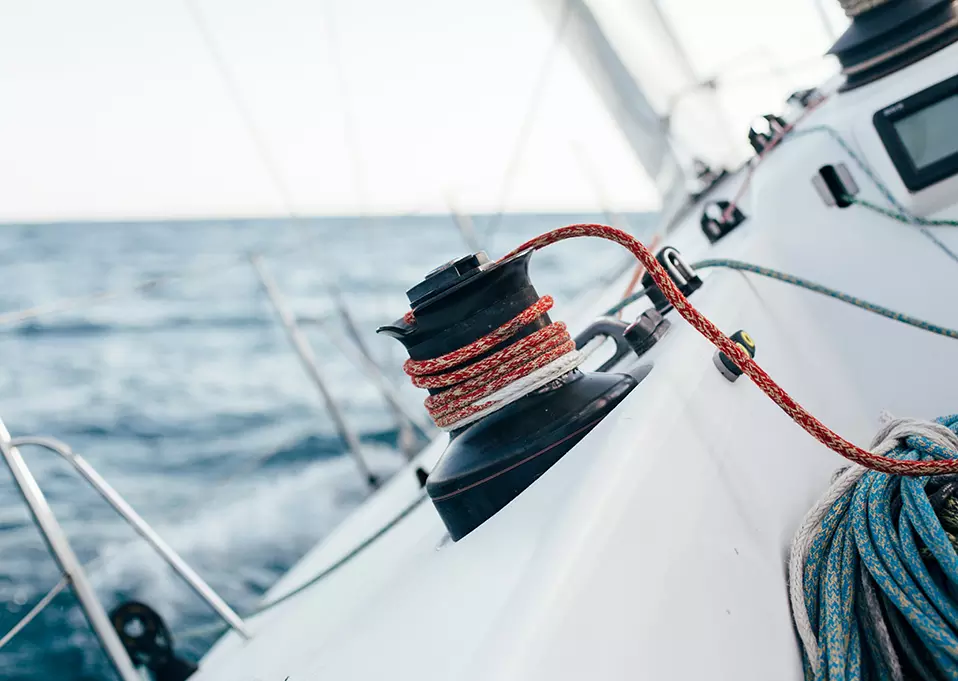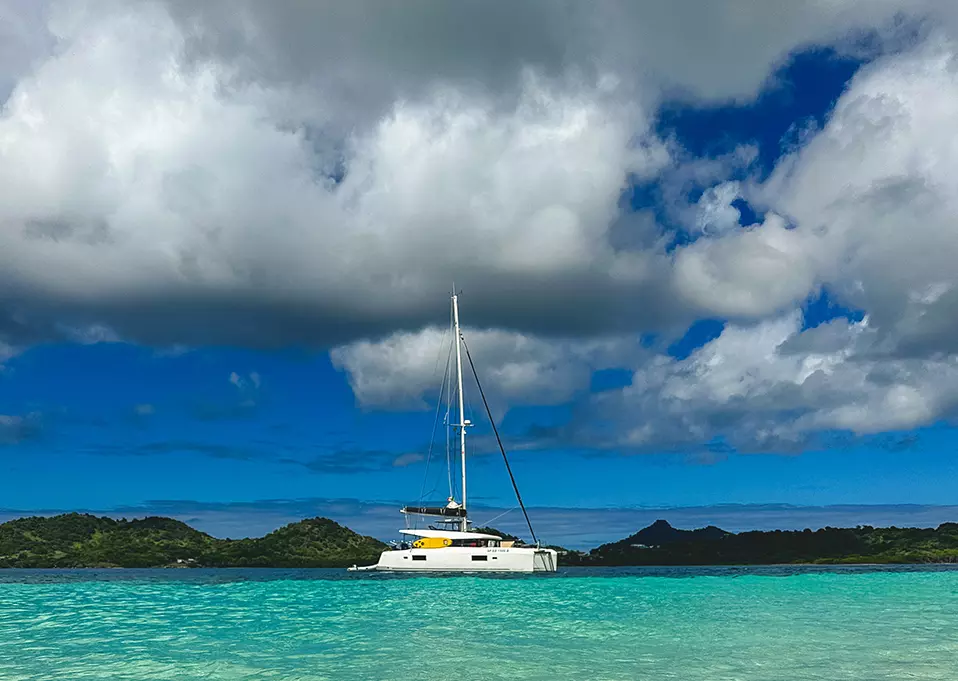
Sailing during the colder months — but also in autumn or spring — can become a fascinating and demanding challenge. Sudden gusts and showers test not only the boat, but above all the crew’s ability to read the sea and react in time. Understanding how these phenomena form and how to deal with them is the key to safe and rewarding sailing.
Recognizing the arrival of gusts
The wind, by its nature, is never constant: it continuously changes direction and intensity. Gusts are short but strong variations, capable of doubling the wind’s strength over a small area, sometimes just a few hundred meters wide. In open sea, this may be enough to make a boat heel suddenly or upset well-trimmed sails.
A useful sign to recognize them is the appearance of the sea surface: in calm conditions, gusts leave dark patches or areas of more pronounced ripples. In harbors or inland waters they are easy to spot; in open sea, however, they tend to blend with the natural motion of the waves, although spray lifted from wave crests can reveal their presence.
Where and why they form
Gusts are the result of atmospheric turbulence, a phenomenon that occurs on different scales: from the global level of high and low pressure systems, to local effects caused by obstacles or temperature differences.
Near the coast, where wind interacts with hills, cliffs, or forests, it’s normal for the air flow to become irregular. In open sea, instead, turbulence arises from the contrast between the lower layer of wind — slowed down by friction with the sea surface — and the upper layer, which moves faster.
Weather forecasts indicate the average wind speed, but they don’t always make the impact of gusts clear. With a Force 3 wind, for example, the speed can almost double in an instant. At Force 5 the increase is less drastic, but still significant.

How to handle them while sailing
Gusts arrive without warning: often there’s no time to reduce sails, only to react promptly with the helm and mainsail. For this reason, it’s wise to avoid an excessive sail plan compared to the average wind conditions, especially when sailing short-handed or on a cruise.
At night, gust strength tends to decrease, an advantage for those at sea in the dark, when it’s harder to anticipate their arrival. It’s also useful to remember that gusts can temporarily alter the wind direction: about 15–20 degrees clockwise in the northern hemisphere, and counterclockwise in the southern one.
Showers and storms: signs and behavior
Unlike gusts, showers and storm squalls are more predictable phenomena, at least during the day. They form where air masses of different temperatures meet or mix, such as along a cold front. In these cases, warm air rises rapidly, cold air sinks, and the result is intense turbulence with heavy rain, sometimes accompanied by waterspouts.
Along a warm front, on the other hand, the mixing is more gradual and precipitation is less turbulent. Showers tend to be brief — often lasting no more than 15 minutes — but they can come with sudden bursts of wind. On calm days, even a moderate shower can generate a useful temporary increase in wind speed.
How to spot an approaching shower
Clouds are the first clue. Marked cumuliform activity, with towering dark clouds, indicates unstable air and a risk of showers. Along the coast, where the land heats up more quickly than the sea, thunderstorms are more frequent: warm air rises, cold air rushes downward, and vortices form.
An onboard weather radar is an excellent ally for detecting approaching nighttime showers or storms. During the day, simply observe the sea: spray on wave crests and whitecaps are unmistakable signs of an imminent wind increase.

Preparing for bad weather
When a storm front is approaching, it’s best to reef the sails in advance. Even though storms are short-lived, they can be violent, bringing sudden strong winds and abrupt shifts in direction. Despite their brevity, they remain among the most intense conditions a yacht can encounter, especially during the passage of a cold front.
With NSS Charter, the passion for sailing continues all year round. Discover the pleasure of sailing even in autumn, aboard our yachts.
For any information send us a message 


